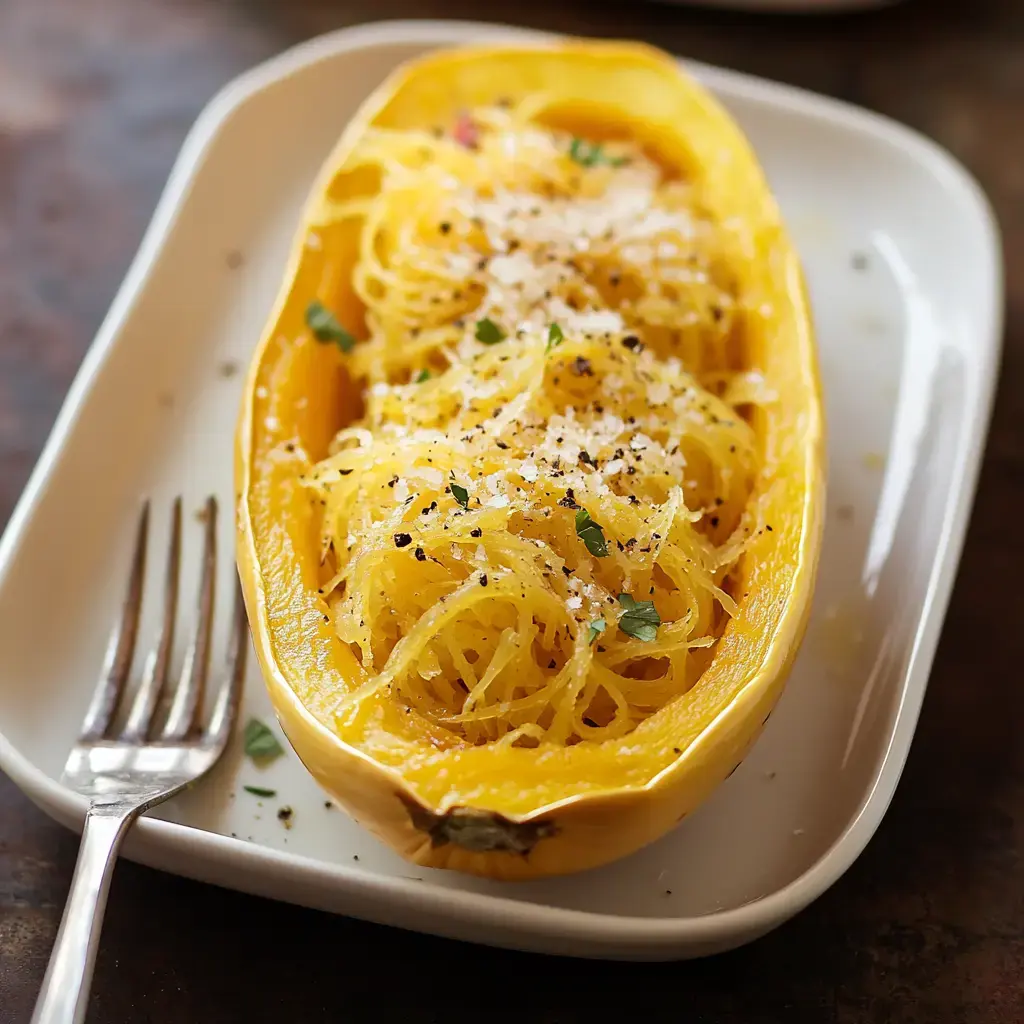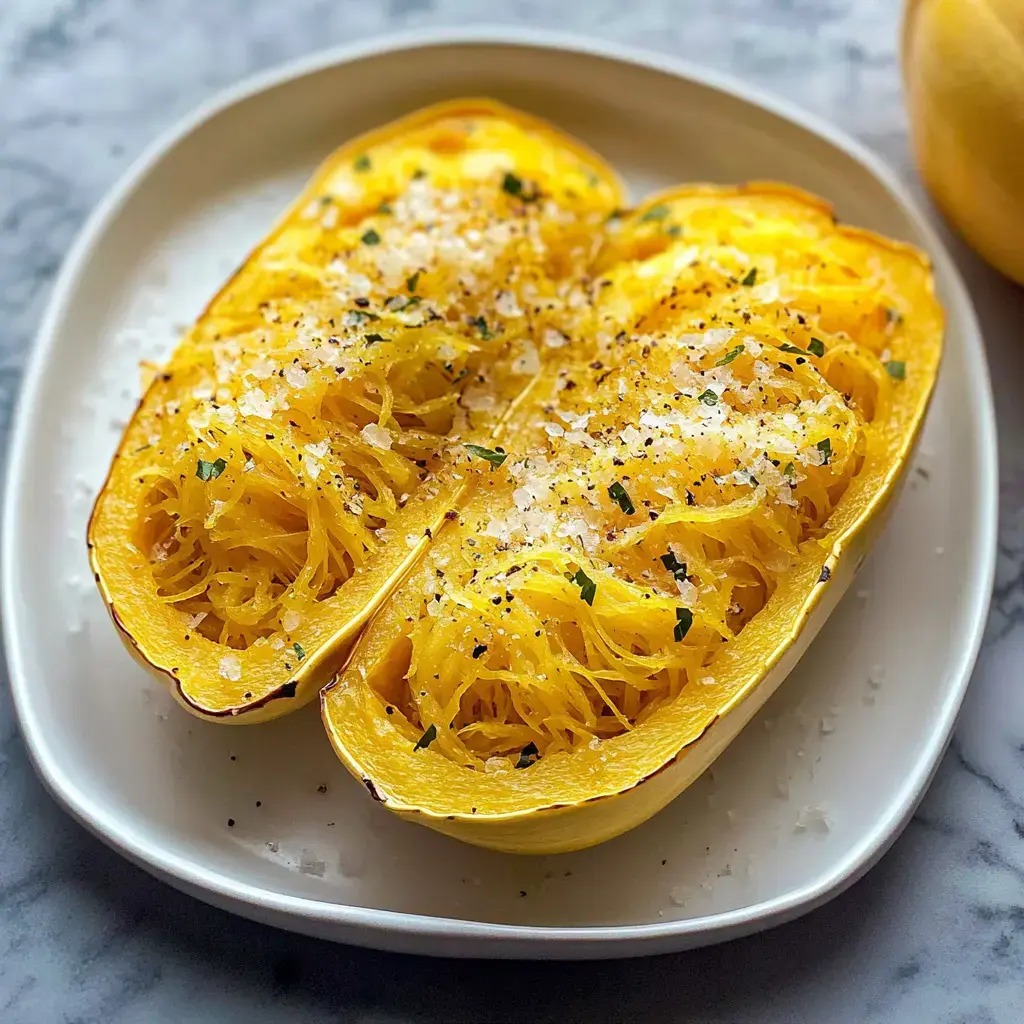 Pin it
Pin it
I've gotta tell ya about my go-to spaghetti squash cooking method I discovered after countless soggy failures. These days I get perfect strands with amazing crispy bits that taste almost like they've been caramelized. Between us, this approach totally changed my mind about spaghetti squash, and I'm sure you'll feel the same way too.
The Magic Behind This Method
For years I tried cooking spaghetti squash many different ways, but this technique is truly exceptional. You'll get these wonderful crispy edges while the strands stay firm instead of mushy. Top it with whatever you fancy, from basic garlic butter to hearty meat sauce. My kids can't get enough of it as a lighter swap for pasta, and I love how it works with my healthy eating plans without feeling like I'm giving anything up.
Just A Few Basic Items
- Spaghetti Squash: Look for one that's weighty compared to its size. When it's too tough to slice, I stick it in the microwave for a bit first - works wonders.
- Olive Oil: A generous splash, around 2 tablespoons will do.
- Salt and Pepper: Enough to enhance the natural flavors.
Step-By-Step Process
- Prep Work
- Grab your best knife first. If that squash seems impossible to cut, pop it in the microwave for 5 minutes - seriously, this helps tons. Split it down the middle, remove all the seeds, then coat both halves with olive oil, salt and pepper.
- Baking Time
- Heat your oven to 400°F. Set your squash face down on a lined baking tray. This step is crucial for achieving those crispy edges we want. Let it cook for about 35 to 40 minutes - you'll know it's ready when a fork slides in easily.
- Creating Strands
- After it's cooled enough to handle, turn the halves over. Use a fork to scrape inside and watch as beautiful spaghetti-like strands form. It's actually quite satisfying to see it happen.
Different Slicing Options
Typically I cut my squash lengthwise since it's simpler and still gives you those tasty crispy parts. But when I'm going all out, I slice it into rings instead. The ring method creates extra-long strands and more of those caramelized edges everybody wants. Just remember to soften it first if you can't cut through easily.
Add Your Personal Touch
I'll often add garlic powder and paprika before cooking. My children go crazy when I mix in Italian seasoning and Parmesan. Recently I tried using pesto instead of plain oil and it was fantastic! You might want to try adding some tahini after cooking for a rich nutty flavor. We love using leftover strands in stir fries or mixing them with cheese in quesadillas.
Storage Tips
Any extra squash keeps nicely in your fridge for about 4 days in an airtight container. I actually enjoy it cold in salads but heating it up works great too. If you want to save some for later, pack the strands in freezer bags and they'll stay good for 3 months. Just push out as much air as possible before freezing and let them thaw overnight in your fridge.
 Pin it
Pin it
Nutritional Benefits
For those keeping track of what they eat, here's the nutritional breakdown. Each portion contains roughly 173 calories, 19g carbs and only 10g fat. There's some protein, fiber and plenty of vitamins too. It's much lighter than traditional pasta but still keeps you satisfied.
Endless Serving Ideas
Each autumn I can't wait to start cooking spaghetti squash again. Once you master this simple technique, the possibilities are endless. Enjoy it plain as a side, dress it up like pasta, or fill the shells for an impressive dinner. Those crispy edges and tender strands make it truly special. My family requests it throughout the season, and I bet yours will too.
Frequently Asked Questions
- → How will I know the squash is ready?
You’ll know it’s good to go when a fork easily slides in. Scrape the flesh with a fork, and it should come apart like spaghetti strands.
- → What’s the simplest way to cut squash without the struggle?
Grab a sharp knife and slice it lengthwise. If it’s too tough to cut, poke it with the knife a few times and microwave for about 3–5 minutes to soften it.
- → Can I use a microwave instead of baking?
Sure, flip the squash face-down in a dish with a few tablespoons of water. Let it microwave for 10–12 minutes until soft. But baking brings out the best flavor.
- → What’s the best way to store leftovers?
Pop the leftover squash into an airtight container and keep it in the fridge for up to five days. Warm it up either in the microwave or on a stovetop in a pan.
- → Why is my spaghetti squash coming out too watery?
Place it cut-side down while baking so extra liquid evaporates. After cooking, let it rest a little and drain any water left over before you serve.
